70 Years of Volkswagen Beetle Cabriolet
To this day, the Volkswagen Beetle is very popular all over the world. In Germany, many of them are now registered as classic cars. No wonder, since several generations of drivers learned how to drive in one of these cars. The open-top convertibles enjoy a special cult status. Although Ferdinand Porsche had already planned such a variant during the original project planning of the Volkswagen and had a final, four-seater prototype built by Karmann in Osnabrück/Germany in 1936, the car initially was launched to the market as a closed limousine, optionally equipped with a folding sunroof. The prototype driving tests had shown that the open version was much more torsional than the closed one. In addition, the wartime conversion of production to Kübelwagen, Schwimmwagen and Kommandeurswagen versions of the KdF-Wagen had almost changed the appearance of this vehicle. However, on behalf of the Wehrmacht, Autenrieth produced between ten and fifteen custom-made convertibles of the KdF-Wagen between 1938 and 1943. When the British military under Major Ivan Hurst restarted production of the Volkswagen after the war, practical cars were first needed for the military itself and some authorities. Lifestyle products such as a Cabriolet had a much lower priority. Karmann in Osnabrück however remembered the open pre-war prototype in 1949.
They made a new vehicle and presented it to the Volkswagen board. They really got the green light for it and produced the Beetle Cabriolet officially on behalf of VW. These were basically based on the most powerful and best equipped limousines of each respective model year. Of course, Karmann also included the optical modifications of the closed version for the Cabriolet. From 1964, for example, the side windows were enlarged. Headlights and taillights were available in numerous variants over the years. Production of the Beetle Cabriolet ended on 10 January 1980 and was discontinued in favour of the Golf Cabriolet, which was already in production at the same time. Karmann produced a total of 330,281 copies of the cuddly open four-seater.
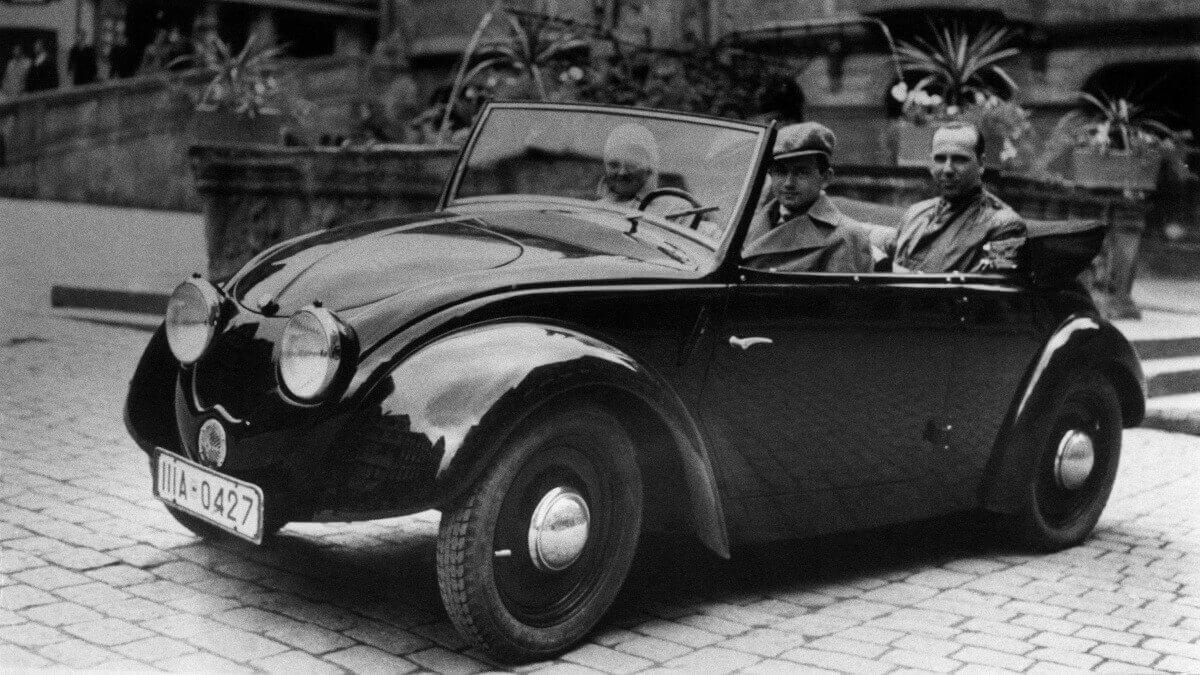



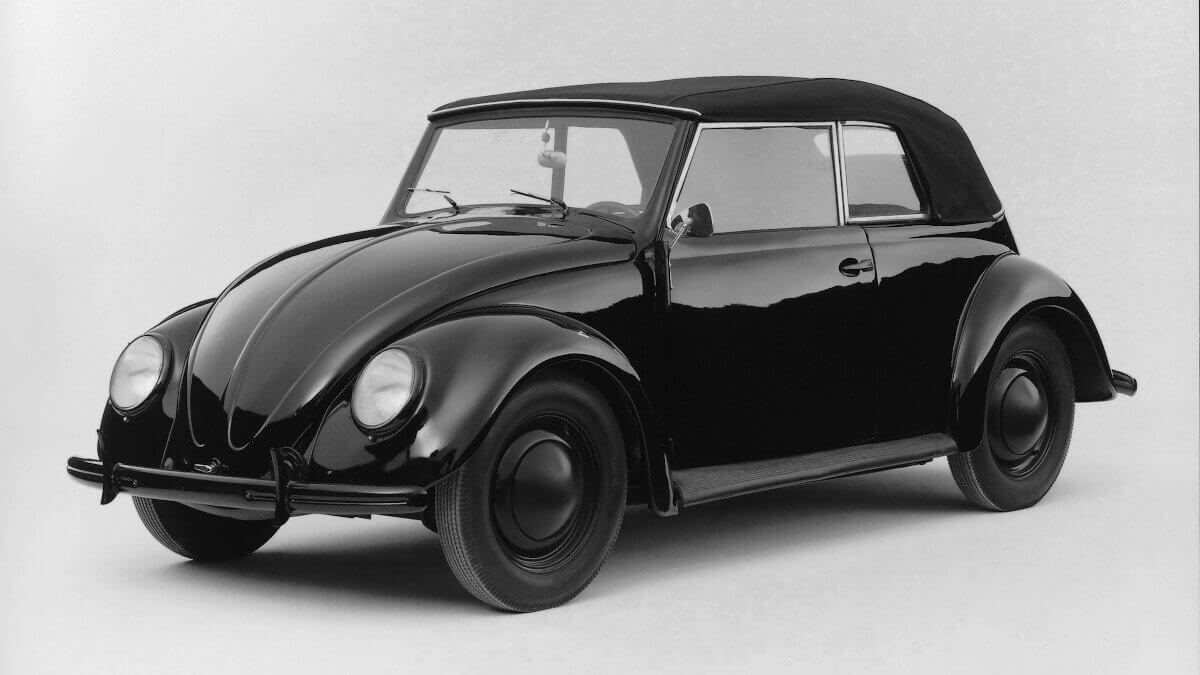



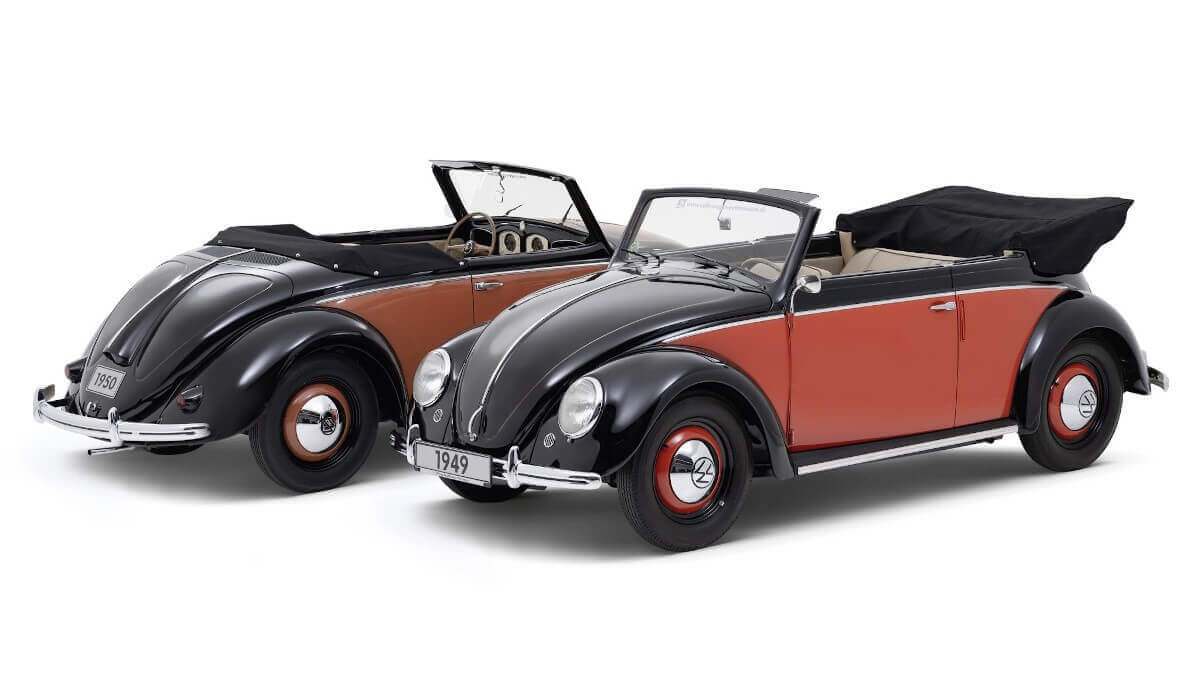



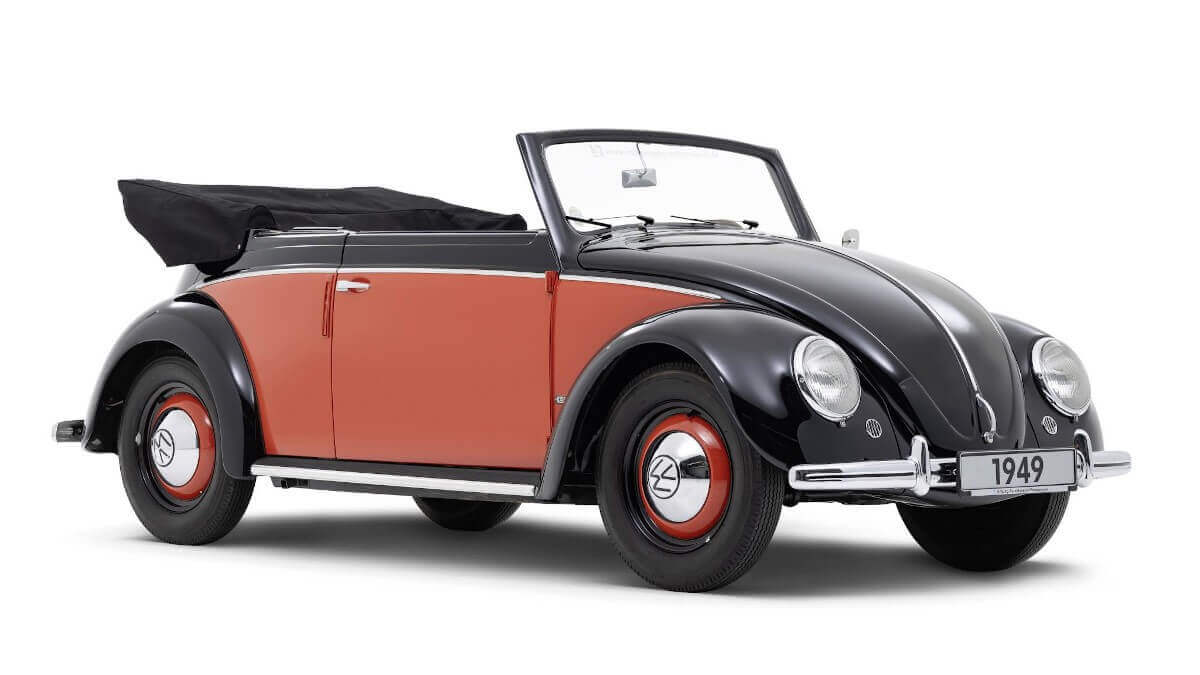



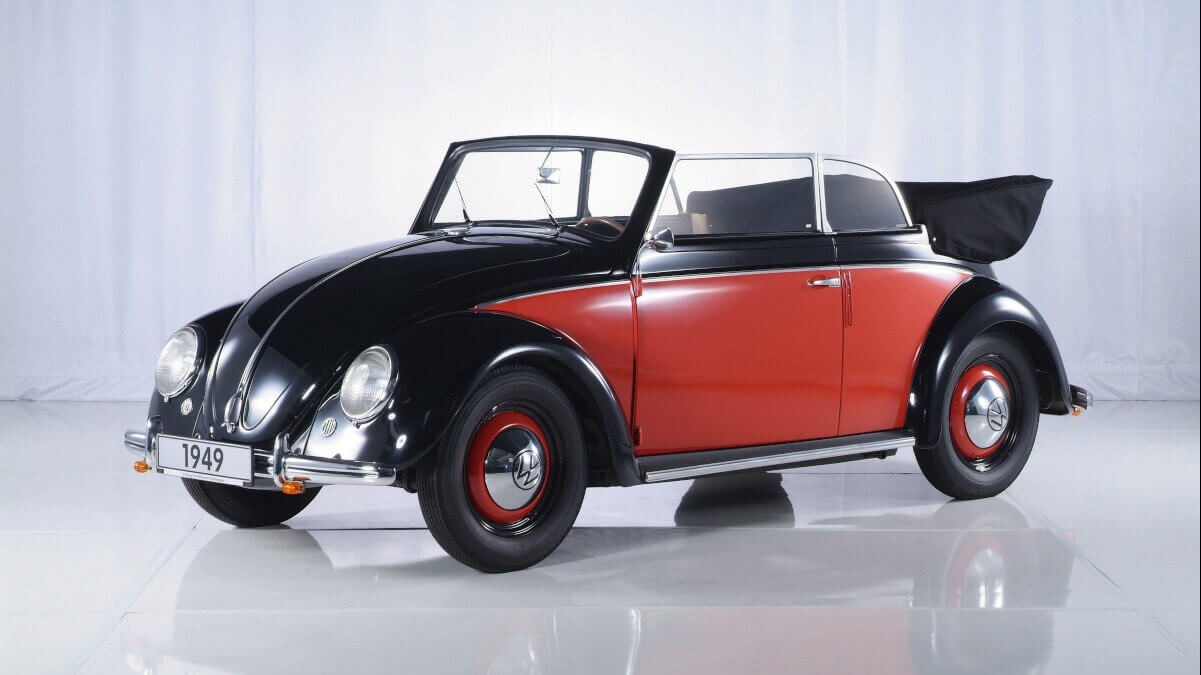



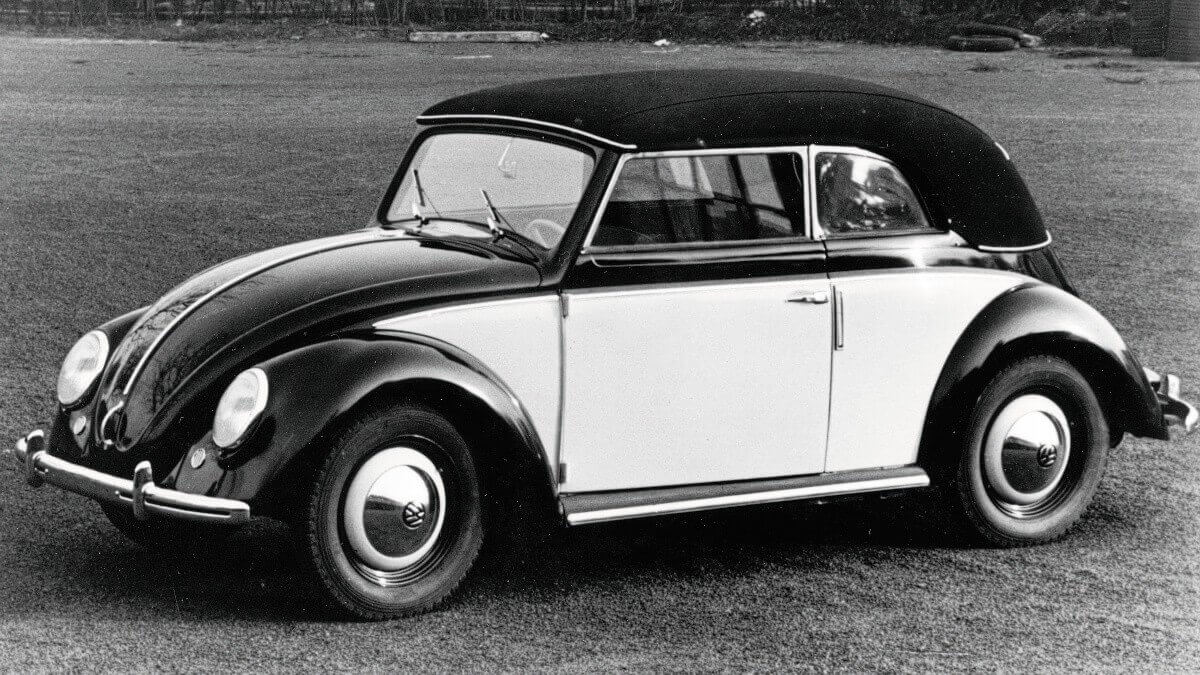



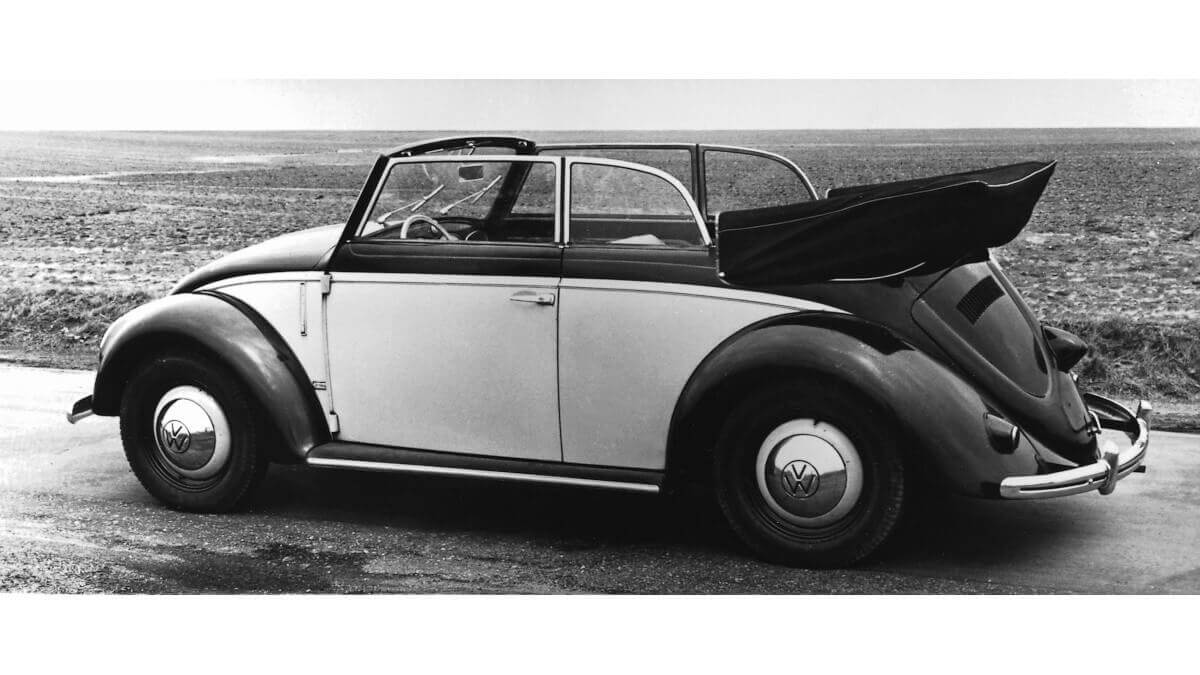



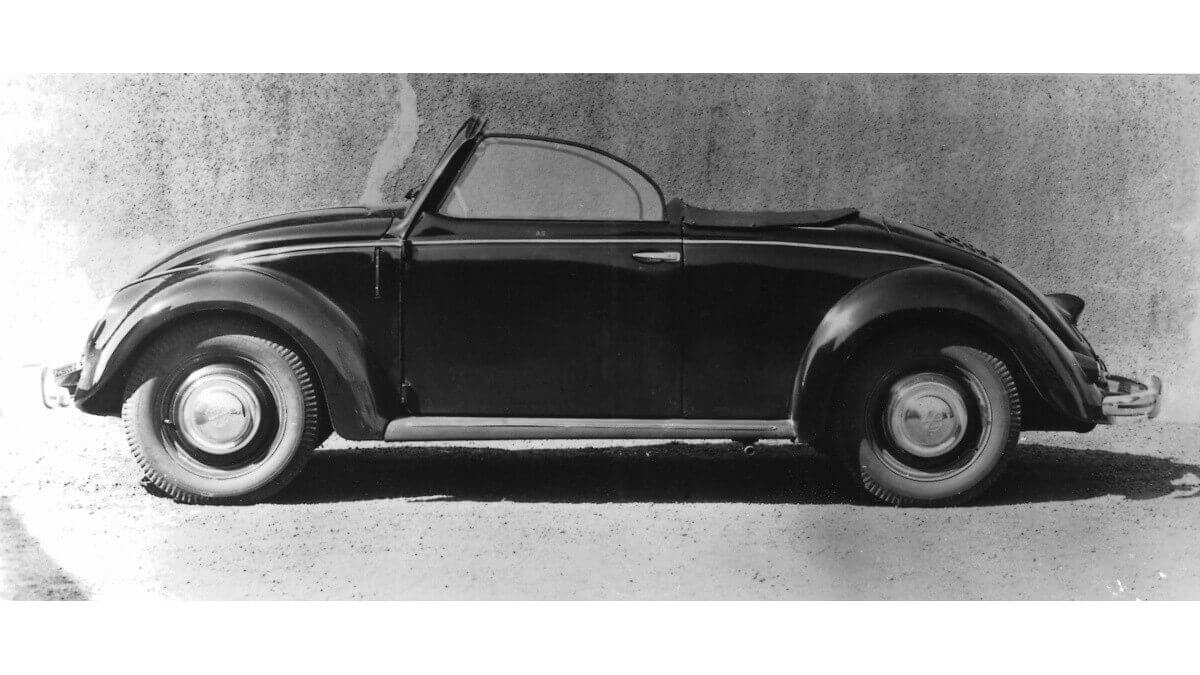



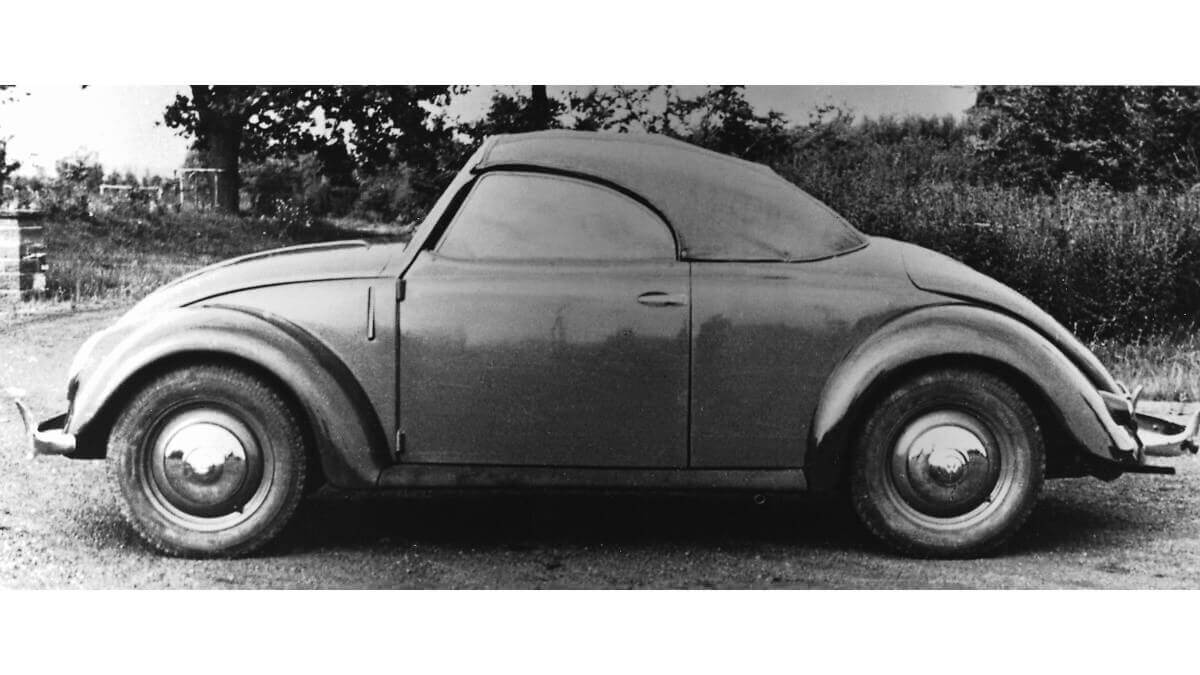



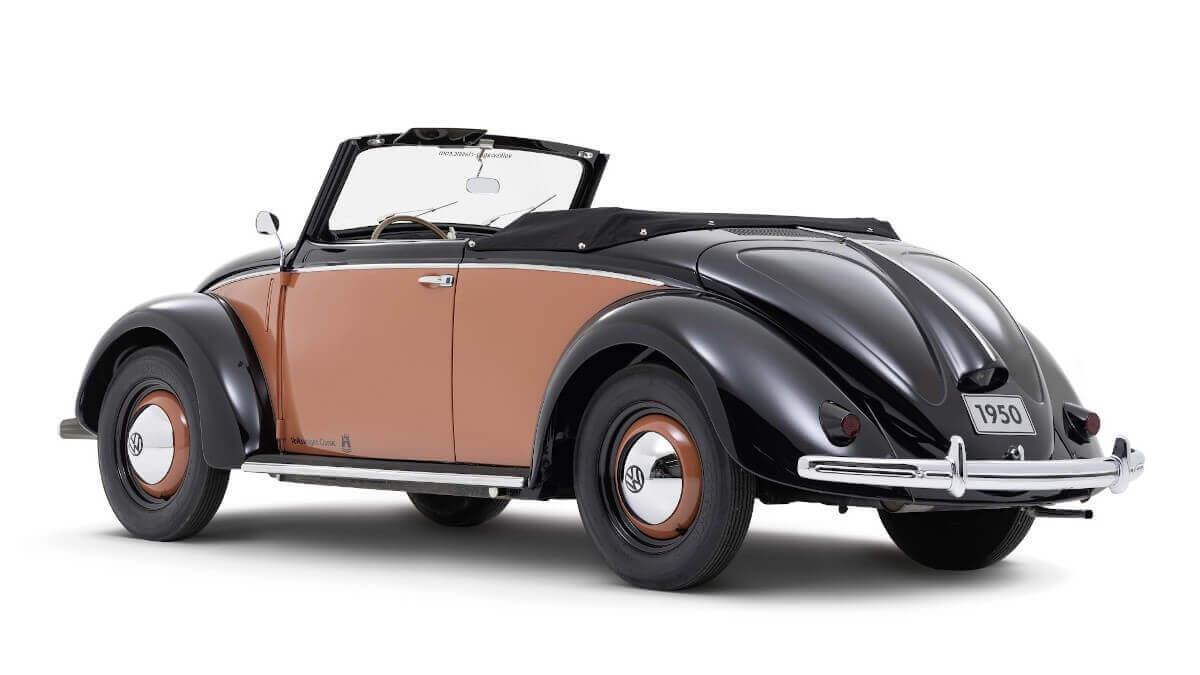



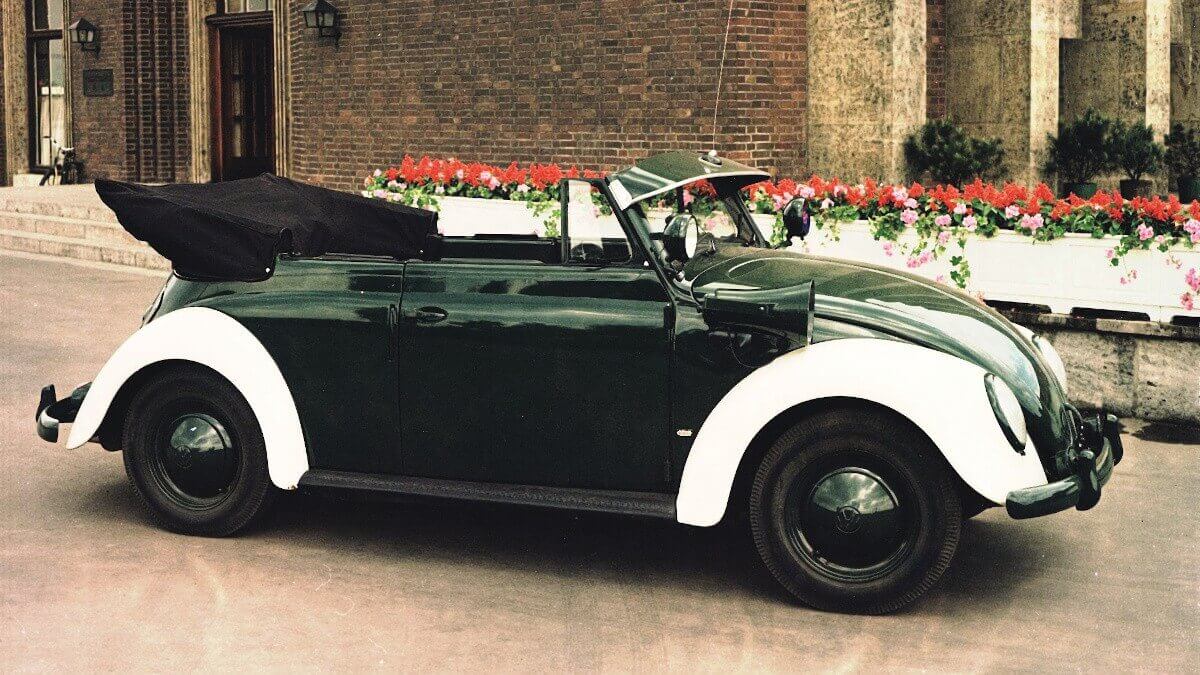



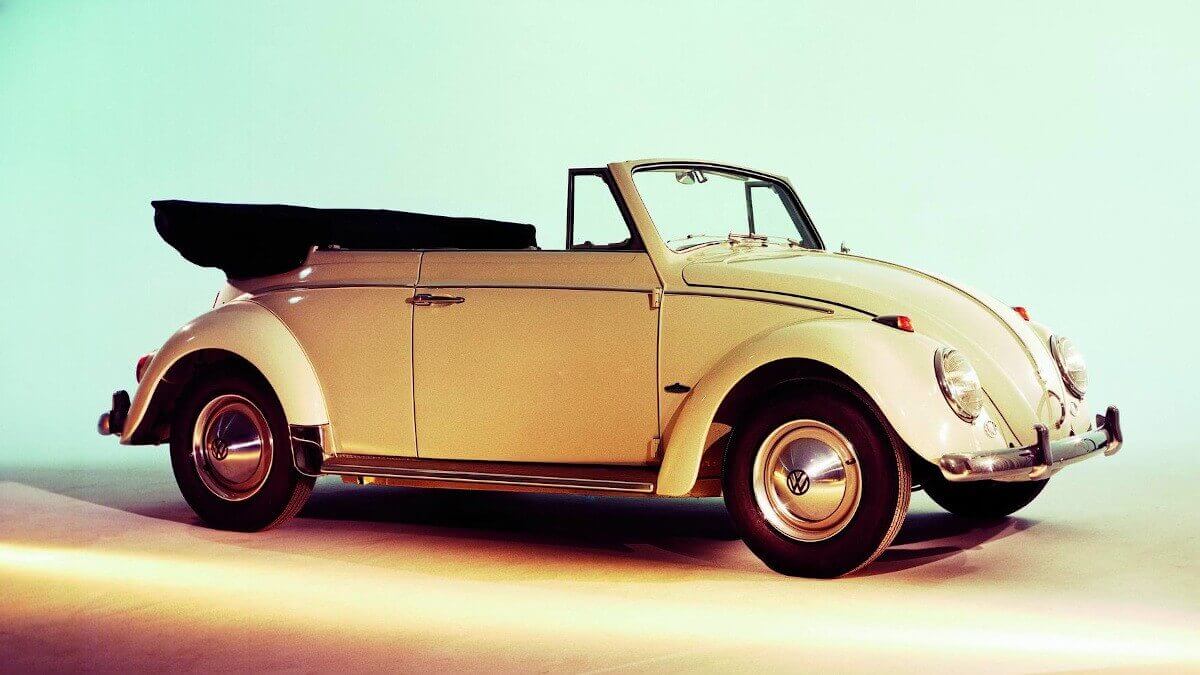



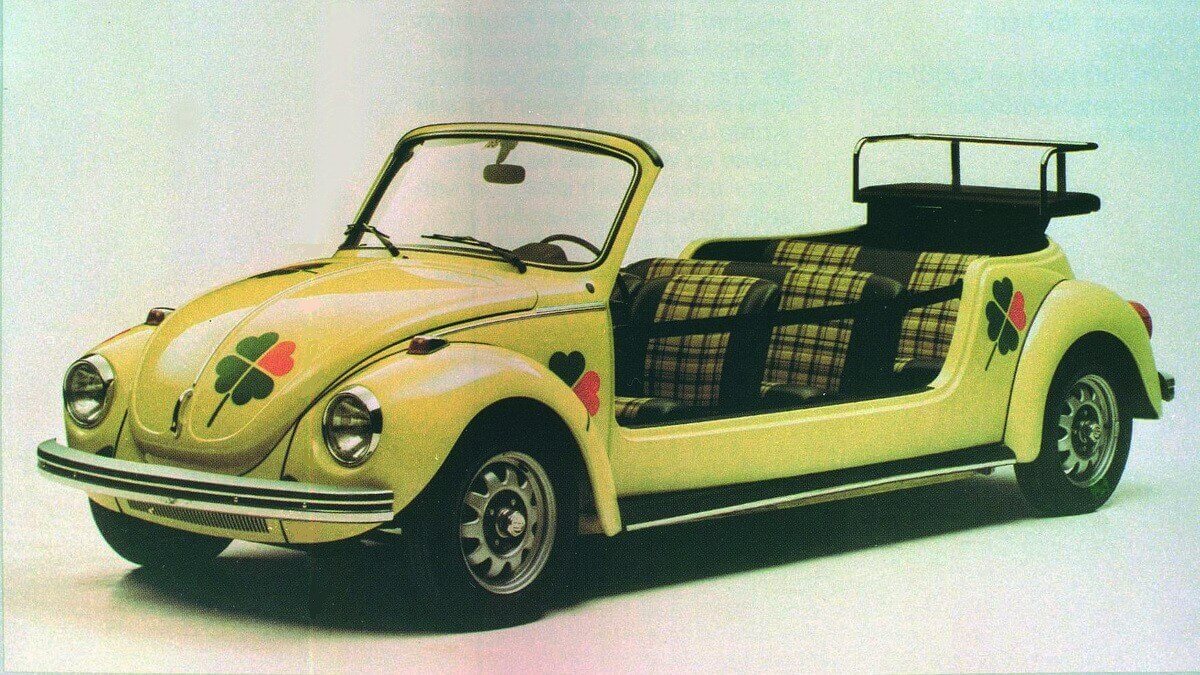



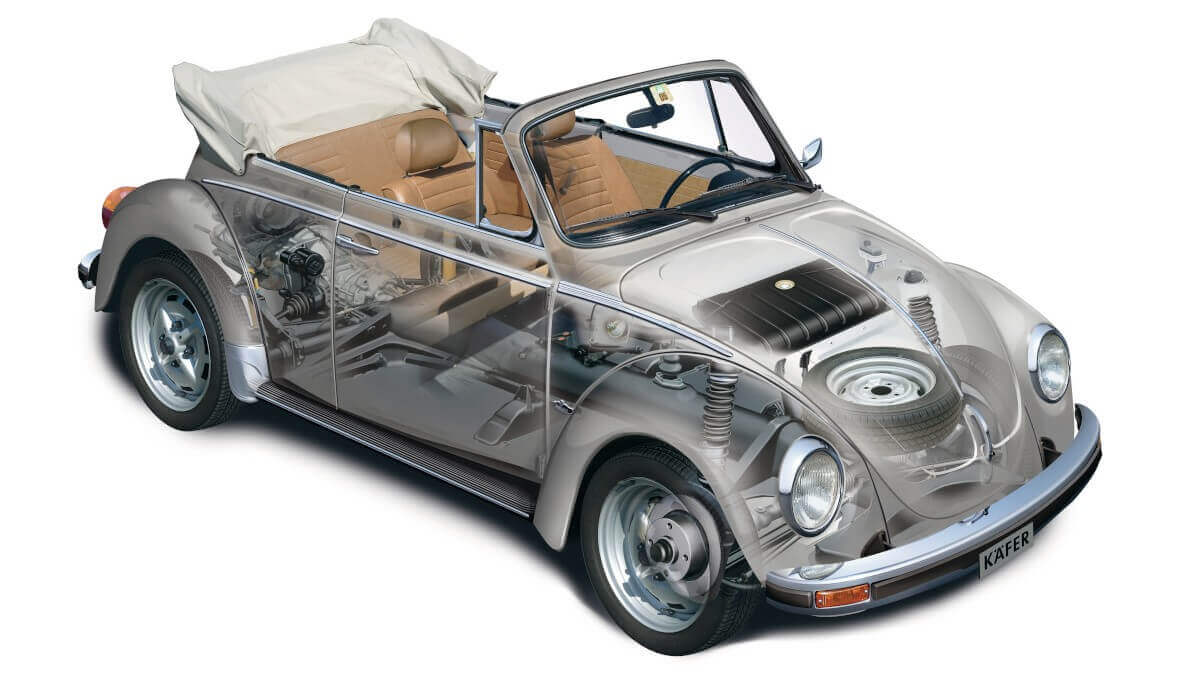



While it is already difficult for some manufacturers today to make a positive decision about a single convertible in their model range, Volkswagen had enough courage in 1949 to include a more noble second convertible version of the Beetle to their official brochures. This was produced as a two-seater by Hebmüller in Wülfrath just east of Düsseldorf in Germany. The significantly higher price compared to the Karmann Cabriolet kept the interest within limits. Nevertheless, VW originally ordered 2,000 units. A big fire finished the production already on 23 July 1949, whereby some final copies could be rescued from the flames and were completed at Karmann. Despite the successful reconstruction of the production halls, Hebmüller was no longer able to return to car manufacturing, as the financial losses incurred weren’t insured and the banks turned their backs on the company despite large orders. Thus it remained with only 696 Beetle Hebmüller Cabriolets, which are today very sought-after classic cars.
Initially also at Hebmüller, later also at Austro-Tatra in Vienna and at Franz Papler in Cologne, 482 copies of a four-door Beetle Cabriolet were produced between 1949 and 1952. It was based on the unchanged chassis of the Beetle limousines and was fitted with conventional doors, chains or canvas panels in the door openings. This version was intended for the police. Other open variants were largely produced without factory support by external coachbuilders such as Rometsch or Clénet. Volkswagen itself produced some open Beetles with extended wheelbase to be used as towing vehicles for the visitor railways at their main plant in Wolfsburg, which were used for visitor factory tours. From 1953, the Karmann Ghia was added to the list. Another open-top vehicle that made it onto Volkswagen’s official price lists and now enjoys cult status. This, however, undoubtedly applies to all members of the large Beetle family.
Images: Volkswagen




